2019 was our third season keeping honeybees, but only our first year actually getting to harvest honey.
We borrowed a 3-frame manual honey extractor from a friend. There are a few styles of honey frame extractors, but most are designed to spin uncapped frames very quickly, using the momentum/force of the spin to pull honey from each little comb cell.
Depending on how much you want to spend, certain extractors hold more or fewer frames, and some extractors are electric instead of a hand crank, like the one photographed below.
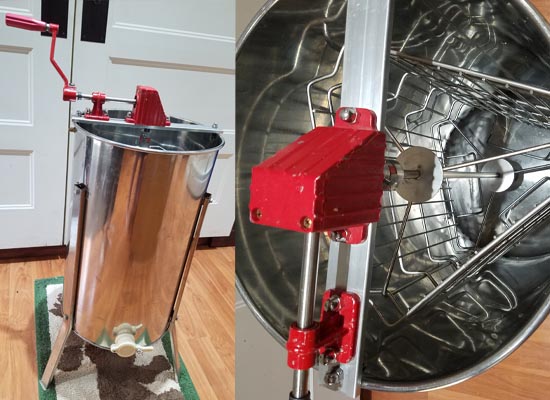
Beehives are filled with ‘frames’, which are exactly what they sound like – frames for the bees to build out their wax comb & eventually lay eggs or fill with honey.
Once the bees fill each tiny cell in the comb with honey, they cap it with a thin layer of extra wax to protect the honey and hold it in place.

Between our three hives, we took 11 deep honey frames from the bees.
(There are two main sizes of frames – shallow and deep. They’re both the same width – one is just taller.)
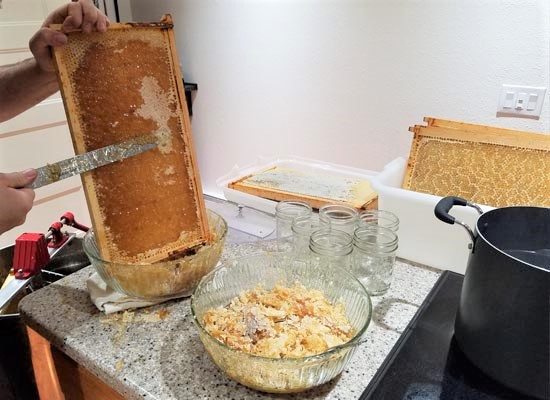
The first step to harvesting honey is called ‘uncapping’ the frames, which is running a knife (or whatever tool you prefer) along the top of the honey cells, just scraping off the thin top layer of wax to reveal the golden honey underneath.
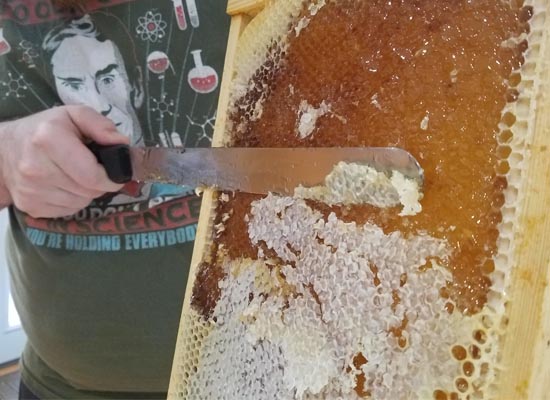
Once we uncapped both sides of a frame, we set it in the honey extractor.
We waited until we had it filled (so 3 frames uncapped) until we closed the top, turned the crank & started spinning.
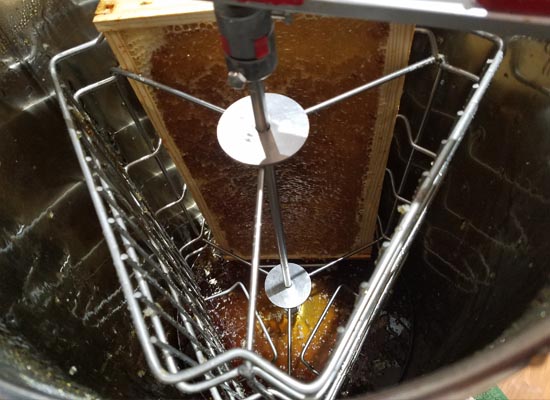
This is what our frames looked like after we were done spinning.
You can see the comb cell structure is still in place so the bees can reuse it next year, but the honey has been spun out of it.

After spinning two rounds of frames, we put a food-grade bin under the extractor spout & unplugged it. Watching the fresh, raw honey pour out was so cool!
In this video of the extractor honey flow, you’ll see little white pieces mixed into the honey. Those are thin chunks of beeswax. The next step was filtering…
Once honey stopped dripping from the spout of the extractor, we used a spatula to scrape it down.
Then we used metal mesh filters set up directly over our honey containers, swapping out bottles & jars as they filled up.

Every couple of containers, we’d need to scrape out the wax build-up from the filters. Then we’d scoop more honey into them to keep going.
We didn’t heat our honey or run it through a second filtering process.
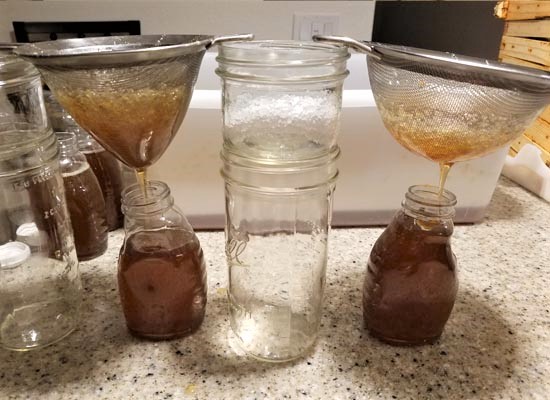
This filtering set-up took a little while to get through the whole harvest, but gave us time to clean up the kitchen.
From beginning through clean-up, it was a full day’s project.
If we get a nice-sized harvest next year, too, we’ll probably get an XL-sized metal mesh filter & filter the whole batch directly into a food-grade bucket, then portion it all once it’s done.

Out of 11 deep honey frames, we ended up with about 3.5 gallons of raw honey in an assortment of glass jars & squeeze bottles.
What a fun project & cool first-time learning experience!
